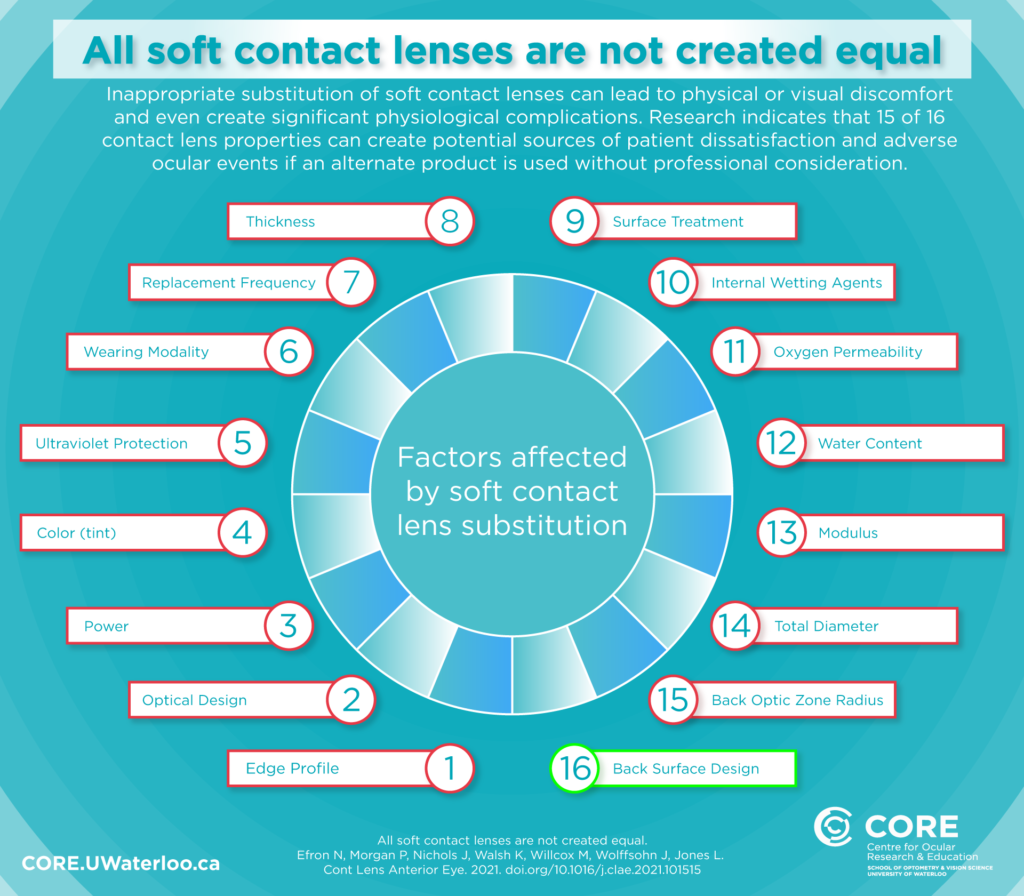

Lyndon Jones, DSc, FCOptom, professor and director of the Centre for Ocular Research & Education (CORE) at the University of Waterloo, was reading a June 23, 2020, statement from the Federal Trade Commissioner on the Contact Lens Rule review. One sentence stood out among several, illustrating how little is known about the complexity of contact lens fits, in general. In wondering whether contact lens wearers should be free to choose their own lenses regardless of the manufacturer, the commissioner wrote that there would be subsets of consumers for whom a specific brand recommendation would be necessary. She singled out patients with astigmatism, “who require special lenses outfitted with tiny weights to keep the lens in place, and only one manufacturer presently makes such lenses.”
Dr. Jones was stunned that, even at the highest levels of a government agency, so little is known about contact lens designs, materials and wearing schedules. He reached out to other contact lens researchers, and they developed a plan: determine if there is evidence-based support that confirms that ‘not all contact lenses are alike’. The research was self-funded, so there would be no implication of manufacturer bias in the results obtained.
The paper, All soft contact lenses are not created equal, was authored by an international team of researchers from four countries — Nathan Efron, DSc, BScOptom; Phillip Morgan, PhD, MCOptom; Jason Nichols, OD, PhD; Karen Walsh, BSc, MCOptom; Mark Willcox, PhD; James Wolffsohn, PhD FCOptom; and Dr. Jones–and appeared in the peer-reviewed journal Contact Lens and Anterior Eye in October 2021. The paper details the multifactorial reasons that qualified eye care professionals (ECPs) consider when choosing a particular contact lens, including a patient’s anterior ocular anatomy and physiology, lens handling, appearance, lifestyle, and affordability.
When analyzing 16 independent material, design, optical and other properties of soft contact lenses, evaluating the reasons why these properties might be appropriate for a given lens wearer, the researchers found that not only were the differences identifiable and supportable by peer-reviewed evidence, there could be serious implications if they were ignored.


“We were a bit shocked by the amount of solid evidence we found,” says Dr. Jones. “If we as researchers were surprised by the results, it seems likely that clinicians would not be aware of the vast number of differences. This is not like switching between different toothpaste brands. One 8.60, 14.00, -3.00D lens is most certainly not the same as another lens with those same specs.”
As a result of the late January 2022 ruling from the Federal Trade Commission and the Department of Justice citing Vision Path dba Hubble Contacts for violations (see story here), this study takes on a renewed importance in terms of patient education. “Even when ECPs are having a discussion on prescriptions and compliance with patients, they may not be forceful enough in telling the patient why the choices made are important. They can say, ‘I’ve chosen this lens specifically for you because it is made from this material, has these parameters and this frequency of replacement. Yet even based on all of the clinical data, the only way we will know for sure if this lens is right for you is by looking at this lens on your eye and ensuring it works for you.”
Dr. Jones adds that it’s important to let patients know that if they are not compliant with purchasing the same brand, using the prescribed care system and replacement instructions that it could impact their comfort and vision and potentially lead to infection or infiltrates. “Why would we expect the patient to just intuitively know this? ECP’s need to have these discussions with their patients and let them know that contacts are medical devices that need appropriate prescribing and follow-up”
In addition to upping the level of education, it also reinforces the eye doctor’s role in the determination of which lens to wear and can help patients understand the value of the professional fees associated with contact lens fittings.
To help illustrate this idea, this infographic helps identify the 16 variables that the researchers examined. “We have made it downloadable such that ECPs and staff can have this conversation. It’s important that everyone in the office understand that having a prescription and picking lenses off the internet is not the same as having the training to analyze these characteristics in recommending a specific brand.
Read the full study here.



